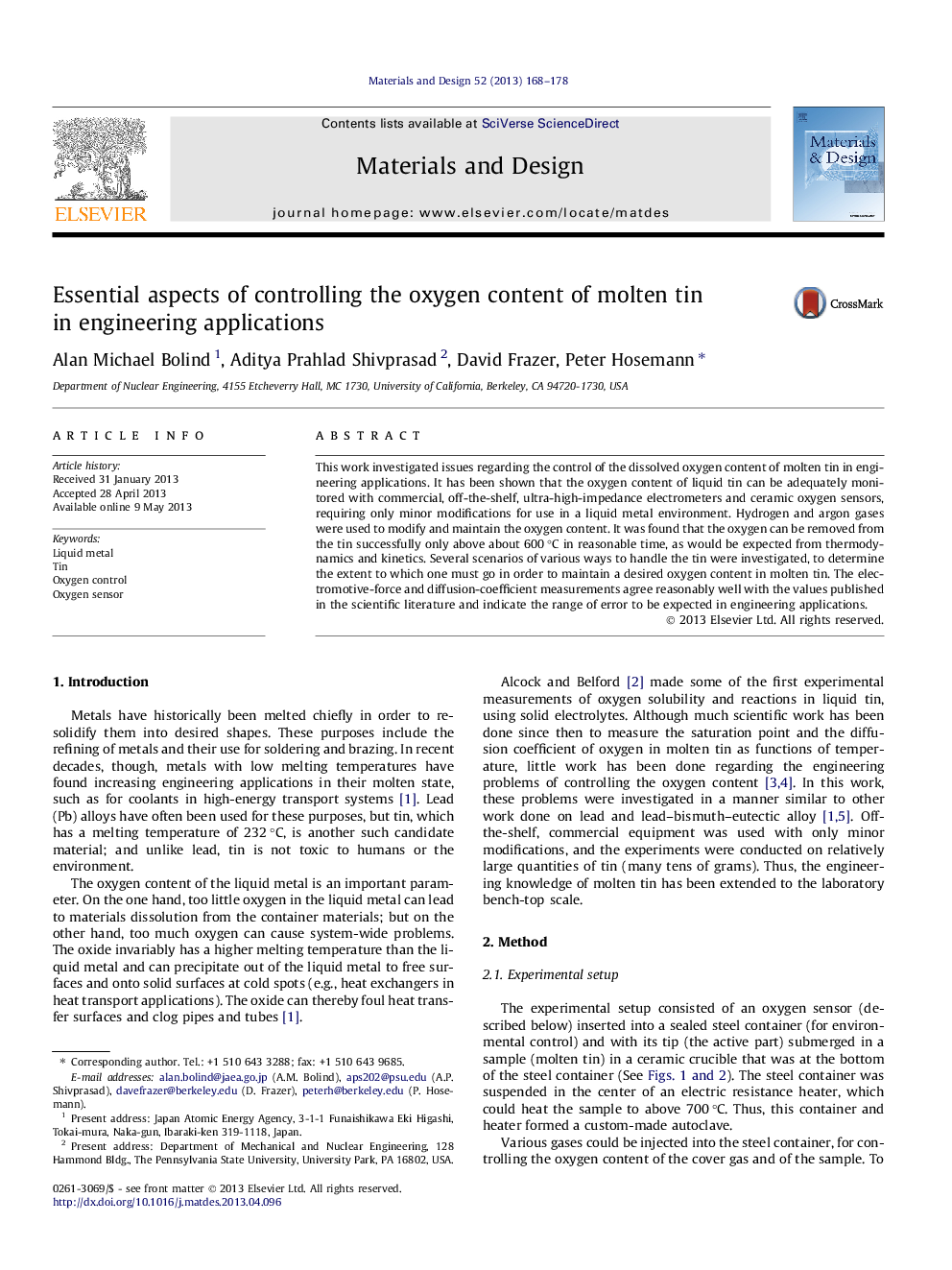| Article ID | Journal | Published Year | Pages | File Type |
|---|---|---|---|---|
| 7221114 | Materials & Design (1980-2015) | 2013 | 11 Pages |
Abstract
This work investigated issues regarding the control of the dissolved oxygen content of molten tin in engineering applications. It has been shown that the oxygen content of liquid tin can be adequately monitored with commercial, off-the-shelf, ultra-high-impedance electrometers and ceramic oxygen sensors, requiring only minor modifications for use in a liquid metal environment. Hydrogen and argon gases were used to modify and maintain the oxygen content. It was found that the oxygen can be removed from the tin successfully only above about 600 °C in reasonable time, as would be expected from thermodynamics and kinetics. Several scenarios of various ways to handle the tin were investigated, to determine the extent to which one must go in order to maintain a desired oxygen content in molten tin. The electromotive-force and diffusion-coefficient measurements agree reasonably well with the values published in the scientific literature and indicate the range of error to be expected in engineering applications.
Related Topics
Physical Sciences and Engineering
Engineering
Engineering (General)
Authors
Alan Michael Bolind, Aditya Prahlad Shivprasad, David Frazer, Peter Hosemann,
